Inside an Altimeter
Has this ever happened to you? Sometimes, you just look at a mechanical part and think, “I wonder what’s inside that?” or maybe you ask yourself, “How does this thing exactly work?” Pilots by nature I believe are pretty inquisitive creatures. For us, surface or book knowledge alone does not suffice. We want to personally know and understand what makes things things “tick”.
I had the privilege recently of helping an aircraft mechanic as he took apart an alitmeter. Why did we need to take it apart? Well, we had no good reason to take apart the altimeter, we just wanted to. The really impressive thing here is not that we took it apart…but that we got it back together! And it works….well, sort of.
Quick review: An altimeter is an aircraft instrument capable of sensing pressure changes. It indicates pressure and the changes in pressure on it’s indicator which displays altitude in feet. There are three pointers on a traditional altimeter. The longest pointer shows hundreds of feet, the middle-sized indicates thousands and the shortest pointer show tens of thousands of feet. Since atmospheric pressure changes affect the accuracy of the indicated altitude, altimeters are equipped with a adjustable barometric scale.
Basically, at the heart of an altimeter is an aneroid wafer. The altimeter case is connected to the static pressure port on the aircraft via a tube. As an aircraft climbs the air (static) pressure decreases, causing the wafer in the altimeter to expand. As the wafer expands it moves a geared arm and some intricate gearing (see video). Think of a large watch. The indicators on the altimeter are connected to this gearing so that when the wafer expands the altimeter indicates a higher indicated altitude. When the static pressure increases, the wafer contracts and it is displayed as a lower altitude on the indicator. All of this is adjustable by the barometric scale adjustment knob and another scale so you can set local altimeter pressure. Pretty cool!

- Start of the disassembly
- Take out the case screws that holds the faceplate on
- Removing the barometric scale adjustment knob
- Faceplate cover is removed
- Here is the barometric scale
- Getting down to the actual mechanisms & gear assembly
- The heart of the altimeter
- The aneroid wafer on the left as it contracts and expands moves the gear armature on the right
- Put the faceplate on just so you can see how it would look together
- Time to put it back together
- This is the back of the barometric scale
- Those screws are the hardest part of putting it back together
- well…almost.
]

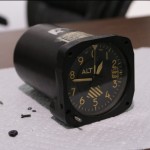
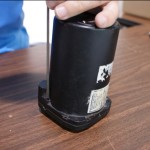

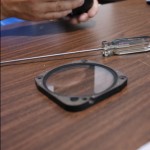
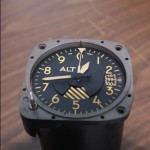
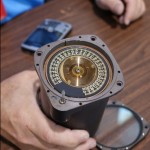
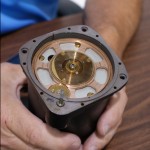
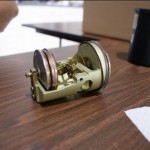
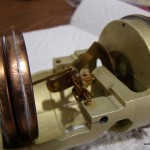
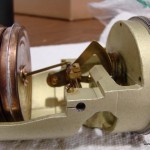
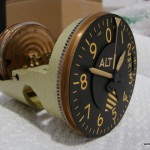
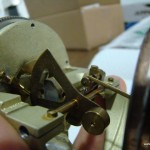
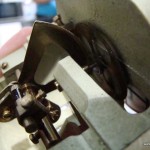
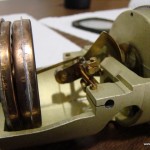
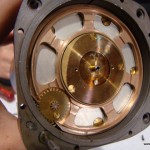
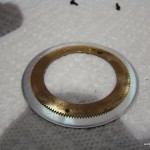
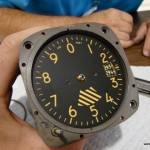
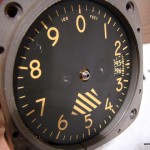
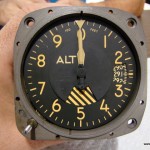
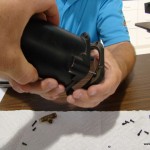
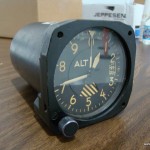
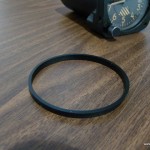

Wayne Conrad on Sep 10, 2009
Now, that’s just cool. Thanks!
Patrick Flanigan on Sep 11, 2009
Really great pictures. Nice to see the Aneroid Wafer and linkages “for real.”
One of my former flight instructors actually took apart a few instruments and made a plexiglass window so you could play with it and see how the insides worked in the classroom.
He even had a turn coordinator with a pair of AA batteries powering the gyro! You could actually walk around and use it to make a two-minute turn.
Best of the Web — Golf Hotel Whiskey on Sep 26, 2009
[…] wondered what the inside of an altimeter looks like, Paul Tocknell takes you inside of one on his AskaCFI.com blog and his post is complete with about twenty pictures along with a […]
Tim on Oct 02, 2009
First of all, great pics.
I am still curious what is in the aneroid waffer? Is it a pressure set by the factory? Or do we get to adjust it with the Adjustment knob?
Paul on Oct 02, 2009
The aneroid wafer is set by the factory to a precise standard pressure which in the case of an altimeter is zero, or a perfect vacuum. The word Aneroid means “without fluid” or in other words, dry air. The barometric adjustment knob does not change the wafer but does adjust the dials and of course the barometric scale.
aerodon on Nov 14, 2009
Doesent the static pressure across port change with changes in airspeed? So wouldnt the the altitude indication change with changes in
airspeed? Where am I going wrong in my thinking?
Paul on Nov 14, 2009
Hi Aerodon,
The altimeter is connected to both the pitot tube and a static port. The pitot tube (sometimes referred to the pitot-static tube) actually provides ram air pressure for the airspeed AND static pressure. It is constructed in such a way that there are holes at the front (which are used for the airspeed) but also holes on the bottom and back of the tube so that the air that leaks in those holes is dynamically balanced. In other words, the air that creeps in those tiny holes almost has to be pure static pressure. Of course, on the other side of the pilot static system is the static port which is located in a position on the aircraft that it is perpendicular to the direction of flight so it is not affected by ram air. Some airplanes even have two or three static ports and by connecting them, you get an average static pressure which is then fed to the pitot static system (therefore the altimeter)
Good question!
Paul.
Nick on Mar 17, 2010
Altimeter is only connected to the static port as is the VSI. Pitot supplies ram air to mach and or airspeed indicators.
hondo on Mar 31, 2013
im disassembleing the same type altimeter , macleod ,similar to kollsman , and cant get the unit apart, glass & front houseing off, iv got as far as removing the last face plate tiny screws you mention, there no screws on the bac of the unit, what am i missing to get main unit out of the houseing? i use it on my bike , and needle went up in elevation rapidly , so want to look inside for somethin broke,, thanks,,,,
hondo on Apr 02, 2013
got it figured out, outer needle just pulls off, vs what looked like a nut ontop,,,
Panel1947 on Sep 26, 2014
When you are sitting on the runway and setting the barometric pressure on the altimeter as prescribed by the local airport, is that the baro pressure at sea level or airport altitude?
I would think that it would have to be set for sea level since that is what the indicator is calibrated for.
Example: If your sitting on the tarmac in Denver and you set your baro press on the altimeter; would it be 29-30.00mb which would be a sea level reference or 24-25mb. which would compensate for the altitude difference.
William on Sep 26, 2014
When you adjust the barometric pressure in the kollsmann window on the altimeter are you setting it to correspond with the airport altitude or sea level?